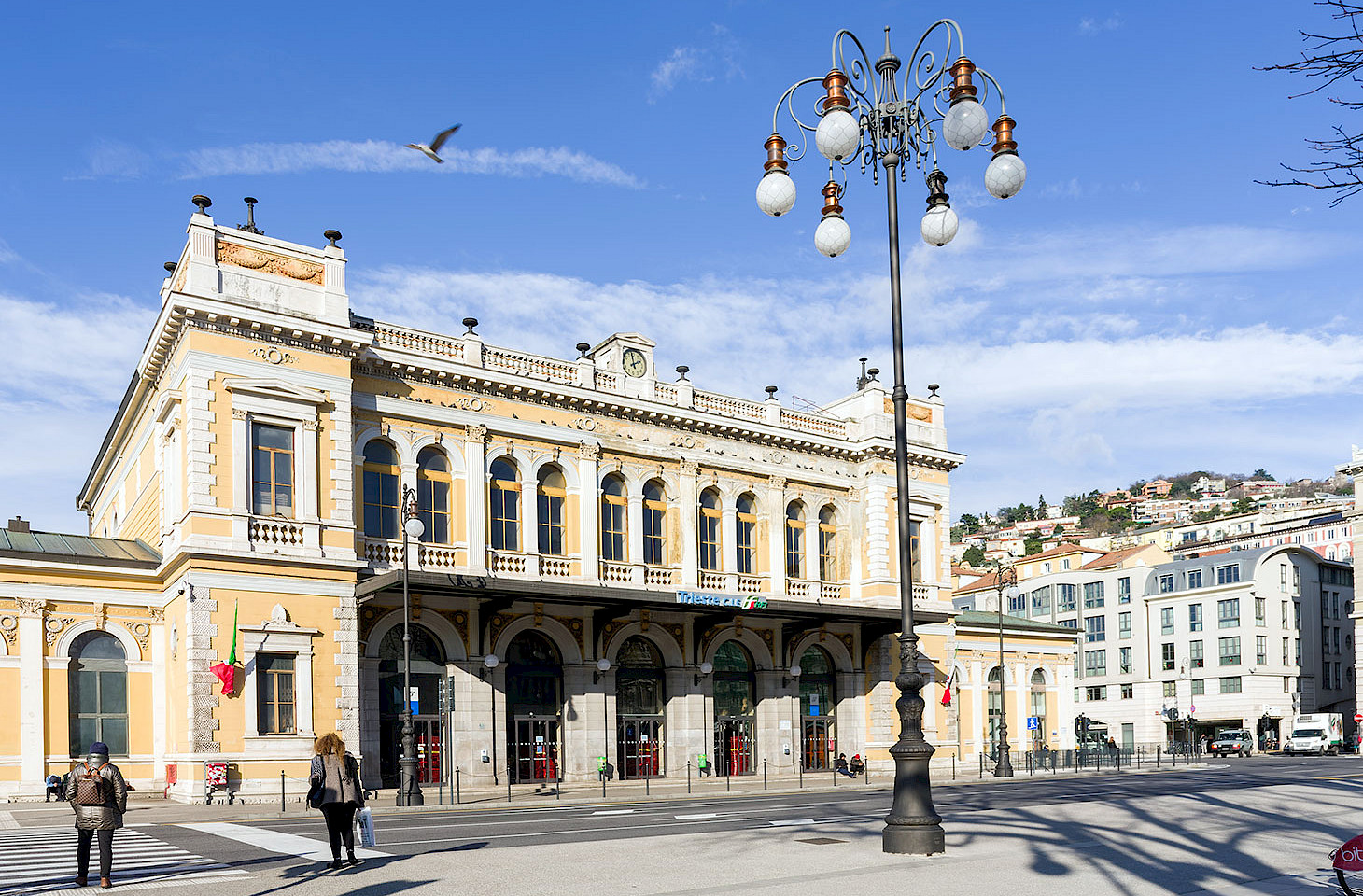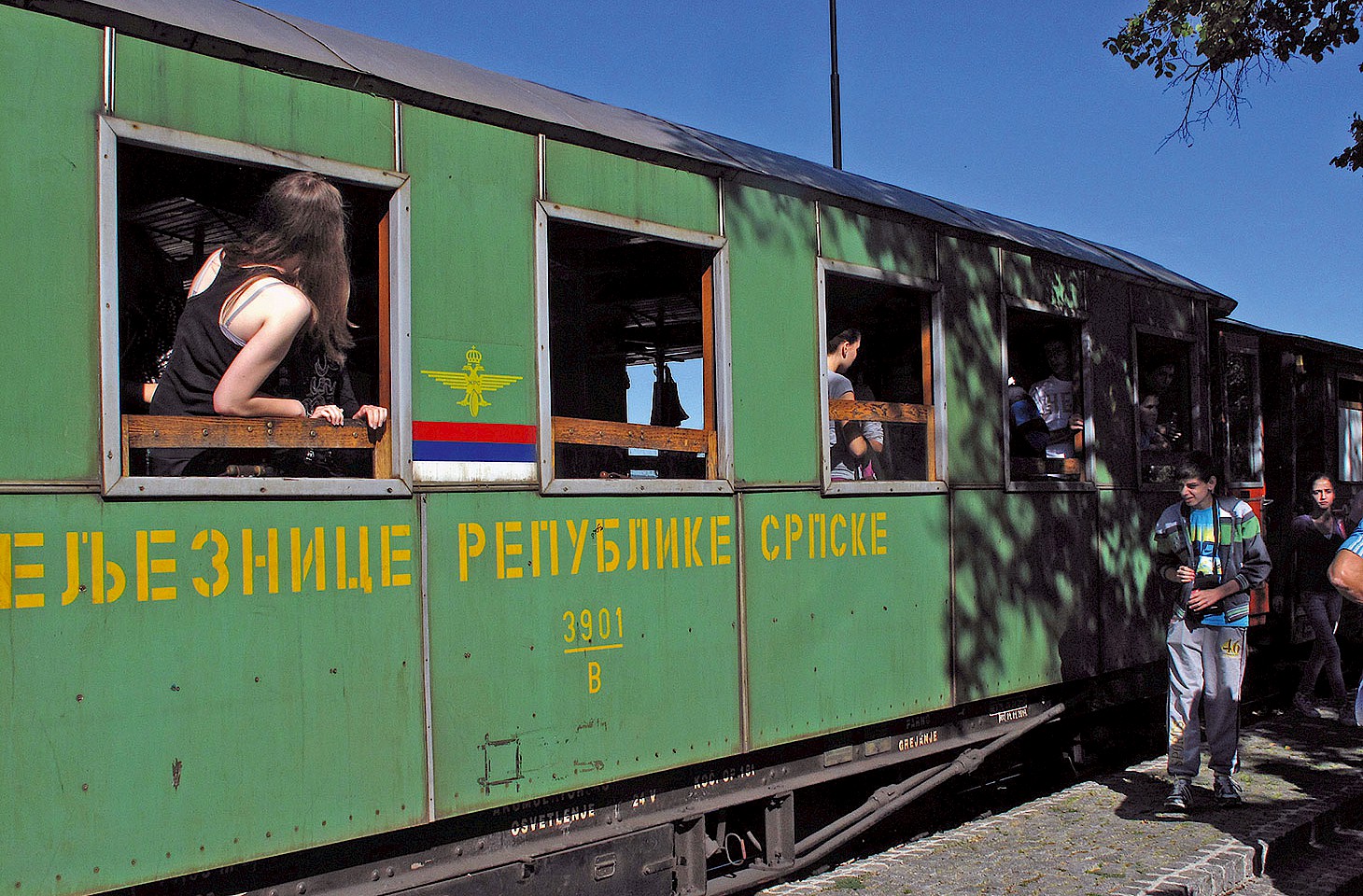In late June, we travelled on one of Eurostar’s new non-stop services from London to the Belgian capital. These trains continue beyond Brussels to Rotterdam and Amsterdam. The 108-minute ride from London to the first stop in Brussels features a high-speed dash through France without any scheduled stops on French territory. The 125-kilometre traverse through France from the Channel Tunnel portal at Calais to the Franco-Belgian border just short of Antoing takes little more than half an hour, along the way affording some fine views of Flanders.
In the manner in which they traverse a country without stopping, the new fast trains to Brussels recall an oddity of 20th-century railway operations in various parts of Europe, namely Korridorzüge. The name has nothing to do with the design of the train (viz. coaches with separate compartments with a lateral corridor as opposed to open-plan saloons), but relates instead to the route taken by a train traversing a foreign territory without any need for border formalities.
In the years after the Second World War, the Soviet Union retained control of an area of southern Finland to the west of Helsinki. The main railway from Helsinki to Turku passed through this region, so the Soviet authorities allowed the Finnish trains to traverse their territory. Those who hoped for a glimpse of Soviet life on the ride to Turku were disappointed. The windows on those trains were fitted with special metal blinds which were drawn down for the duration of the transit, leading observers to quip that Finland had the longest railway tunnel in the world. Although the Soviet lease on the Porkkala region nominally ran until 1994, Moscow ceded the area back to Finland in 1956, so bringing to an end Europe’s oddest corridor train. In the year or two thereafter, passengers riding the Helsinki to Turku route — now on trains with the blinds open — were surprised to see the Soviet affection for bright blue paint and new roads constructed entirely of cobble stones.
Border changes after the Second World War and the hardening of borders in the Cold War years meant special challenges for rail operators.
The notion of the sealed train, exempt from passport formalities and customs examination, traversing a foreign country no longer has much currency in Europe, where the Schengen treaties have meant that borders have faded over much of the continent. But there are times when such permissive arrangements have helped shape the course of history. In 1917, two dozen revolutionaries, led by Lenin, set out from Switzerland to return to Petrograd. At Gottmadingen, on the Swiss-German border, Lenin’s party joined a train for transit across wartime Germany. The Berlin authorities were cautious about the Russians, but were happy to afford transit on the condition that the Russians travelled in a sealed carriage.
Lenin’s journey was a one-off arrangement, but by the 1930s there were many rail services across Europe exploiting the Lenin model, using the privilege of traversing foreign territory without stopping, to reach their destination — often with the carriage doors sealed while transiting the alien country. Poland and Romania, which shared a common border in the years after the First World War, concluded an agreement in 1929 which allowed Polish trains travelling between Jasienów Polny and Zaleszczyki to transit Romania without let or hindrance. This was a part of Poland ceded to the Soviet Union in 1945.
Border changes after the Second World War and the hardening of borders in the Cold War years meant special challenges for rail operators. But the idea of privileged transit prevailed. In settling Germany’s new eastern border along the Oder-Neisse Line, officials at the Potsdam Peace Conference probably didn’t notice that the railway which runs south from Görlitz up the Neisse Valley to Zittau crossed the new German-Polish border four times. A permissive corridor train arrangement was introduced, with the German trains even stopping at one railway station on Polish territory. Krzewina Zgorzelecka was not an authorised point of entry into Poland, so passengers alighting here were required to walk over the Neisse into Germany using a footbridge right by the station platform. The train service still runs, but since Poland joined the Schengen area in 2007 there are no longer any border formalities along the Neisse Valley.
Following the post-war division of Germany, rail travellers from Bebra to Herringen — both towns in the West German state of Hessen — travelled through a corner of the DDR. Although there were no advertised stops for passengers in the DDR, the working timetables showed a scheduled stop of five minutes at Gerstungen, where the train reversed direction.
Austria now has pretty frictionless borders with all eight of its neighbours, all of which are members of Schengen (the last to join was Liechtenstein in 2011). But in the second half of the last century, frontiers were firm and the Austrian Federal Railways (ÖBB) secured privileged transit rights for its domestic train services to cross Germany, Italy, Hungary and Yugoslavia in order to link Austrian communities along the border. To this day, the hourly Railjet trains from Salzburg to Innsbruck still run non-stop through a 115-kilometre corridor of German territory.
Contemporary Europe has nothing that quite matches the slow train from Ustrzyki Dolne to Przemyśl — both communities in south-east Poland — which traversed a corner of the Soviet Union. The link survived until 1995. Even today the Russian Federation relies on transit trains to serve its exclave Baltic oblast of Kaliningrad. But these are not Korridorzüge in the strict sense. These trains traverse European Union territory, along the way stopping in the Lithuanian capital of Vilnius. Russians travelling between Russia-proper and Kaliningrad are required to secure in advance a sort of quasi-visa called a Facilitated Rail Transit Document (FRTD). The whole idea of the corridor train is that passengers are not burdened by such formalities. Corridor trains functioned, even across difficult borders, because passengers were exempt from checks.
Viewed in that way, the new non-stop London to Brussels Eurostar service is not really a corridor train. Passengers boarding at St Pancras are required to satisfy French immigration regulations, even though they will dash through France without stopping. Travellers from states which are neither in the EU nor in Schengen thus receive a French passport stamp. It is applied on British soil to the passport of a traveller who has no intention of even stopping in France. That, surely, is a bizarre oddity which makes the regular corridor train seem elegantly simple by comparison.




